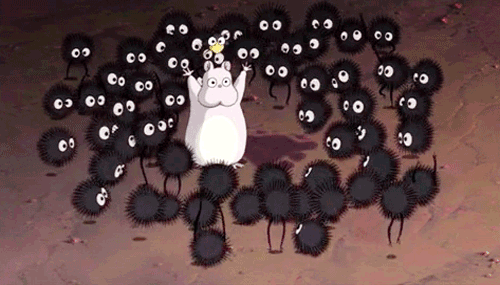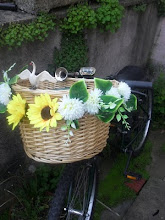Ok, so I'm
stretching the meaning of crafting here again, but bear with me.
I've always been interested in DIY cultures, especially in relation to
the arts and technology, and I've recently discovered that there are
all kinds of hacking and DIY projects going on in the field of health care (and
that's before we even get onto the topic of biohacking). Mostly, these hacks take place in
developing countries, or are designed for such contexts, where access to the
necessary equipment is not a given. So, by virtue of being inventive and
economical, and producing some extremely useful things, these activities are
pretty damn crafty in my books!
This post is the text of an article
I wrote last month for the science pages of my old college newspaper. If you're
intrigued, read on, and if you're vaguely interested but put off by all
the words, then skip straight to the video. It includes a blood test kit
constructed with LEGO.
DIY medicine might not sound like best practice, but in reality
the recent innovations coming from the hacker and “Maker” movements in the
field of medicine have the potential to revolutionise healthcare, particularly
in developing countries.
Medical aid given
by rich countries to poorer ones is a nice news story. What we read about
less often, however, is the fact that this top of the range equipment
frequently fails or is impossible to maintain. Rather than donating cheaper
models of the same equipment, Jose Gomez-Marquez of MIT argues that there is a
need to look towards cheaper materials, and design hardy devices with the same
functionality but for a different environment and at a more affordable cost.
His Little Devices Lab at MIT hack simple objects, making nebulisers for
medication from bicycle pumps for example, and assemble DIY medicine kits.
The work of
such groups, which exist at several U.S. universities, is not only making a
difference to health workers in developing countries but is also challenging
the medical devices industry, which mainly markets devices that are expensive
and designed to prevent hacking.George Whitesides and his team at Harvard have
been working with an extremely ordinary material: paper. They have created
microfluidics devices, which test body fluids to diagnose for a particular
disease or detect for a particular hormone, such as in a pregnancy test.
Paper
naturally draws in liquids through tiny capillaries, eliminating the need for a
mechanical pump. The team embeds polymers that shun water on a piece of paper
the size of a postage stamp to create channels than a drop of blood or urine
can travel through to meet small pools of chemical reagents. Paper is not only
cheap, it is also easy to produce and store in high volumes, and can be burned
after use, which is a great advantage in areas where medical waste disposal is
a problem. The lab’s first test is for liver disease, a frequent side effect of
AIDS medications. Where no medical personnel are at hand, a photo of the result
taken on a camera can be sent to a lab, and a diagnosis will be sent back in a
text message.
Another
ingenious paper tool is Manu Prakash’s foldscope, developed at Stanford.
Essentially an origami microscope, it fulfills the need for a light, portable
microscope for diagnoses and testing water. The pattern is printed in several
die-cut pieces on a sheet of stiff, water-resistant paper. The sections are
colour coded, making the microscope fast and easy to put together without the
need for written instructions. Once folded, it stacks two polymer lenses over
one another, magnifying the image on a slide up to 3000 times.
The Little
Devices team make five types of MEDIKits, including the Drug Delivery Kit. It
contains core devices: syringes, nebulizers, inhalers, transdermal patches,
pills. Then there are modifier elements: colour coding, shape coding, springs,
plungers, compressors, tilt sensors, buzzers, timers, bicycle pumps, and
template cutters. These allow users to change the functionality of the
devices. Also included are general supplies like Velcro, tape, paper, tubing
and needles. Soon after field testing the kits in Nicaragua, Gomez-Marquez and
his team realised that users were hacking the kits themselves, cutting parts
like tubing, and taking parts from one kit and using them in other ones. They
concluded that for the kit to be successful, they would have to design for
hacking.
Instead of trying to change the global
supply chain for medical devices, the Little Devices team has embraced the huge
and far-reaching toy supply chain of cheap plastic and electronic mechanisms.
Gomez-Marquez describes what they dubbed the Glucometer/Gameboy paradox: both
devices have equally complex electronics and comparable retail prices, but
while gameboys are available worldwide, 16 clinics in Nicaragua have to share a
single glucometer (a device used to test the level of glucose in a patient’s
blood).
Getting these
frugal technologies out of the lab and into the hands of those that need them
is still a challenge. Getting entrepreneurs to invest in these kinds of
projects, whereby devices constructed for 50 dollars can perform the same
function as one that costs 100,000 dollars, is another huge challenge. DIY
medicine subverts the capitalist
system that is entrenched in healthcare as
much as any other industry.
With many
healthcare professionals working in challenging conditions already taking DIY
action, it’s time for more research groups to weigh in and help put health
hacking into the hands of the people who have the most to gain from its
affordable innovations.
Links
original online version of this article

































